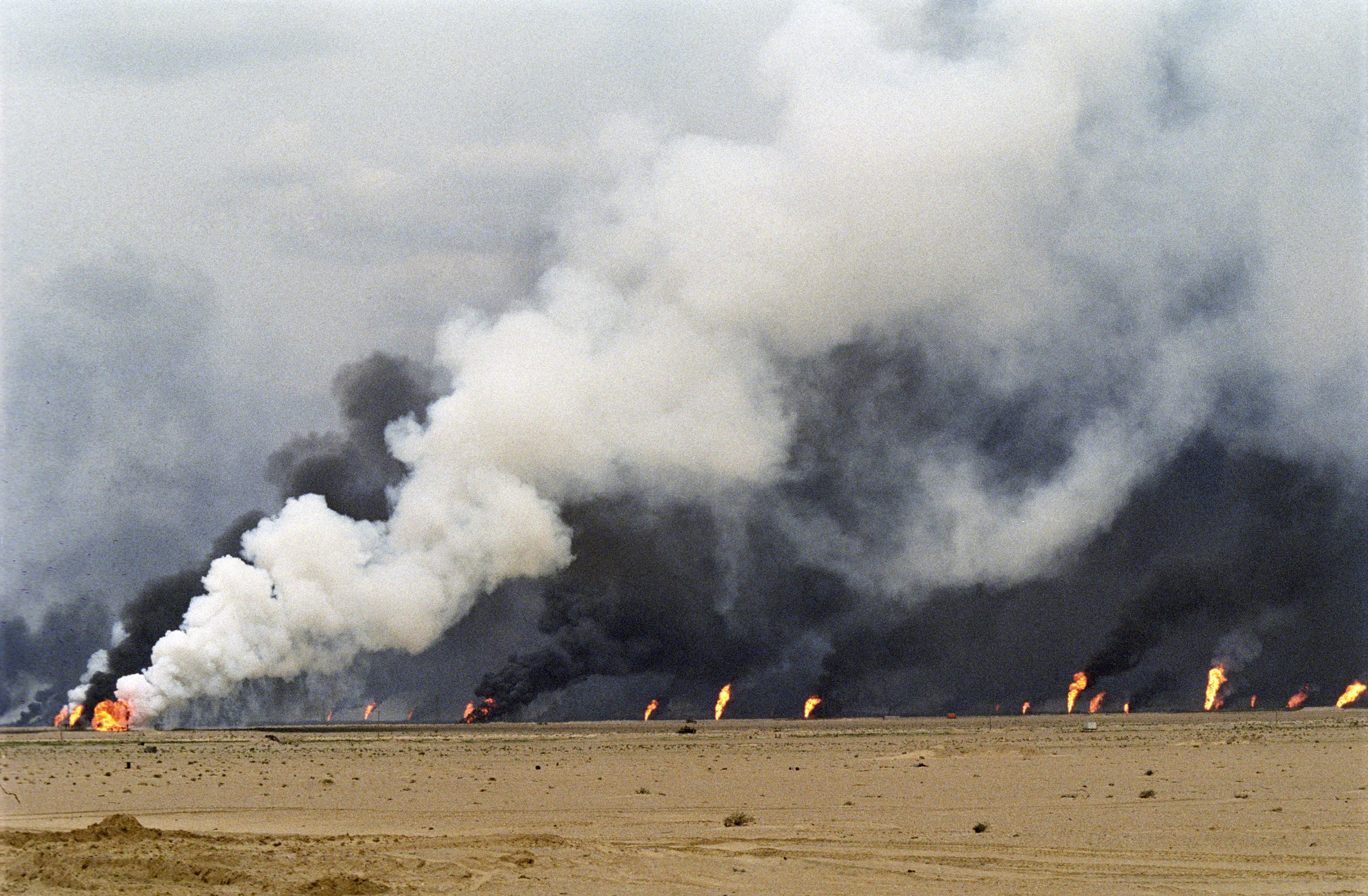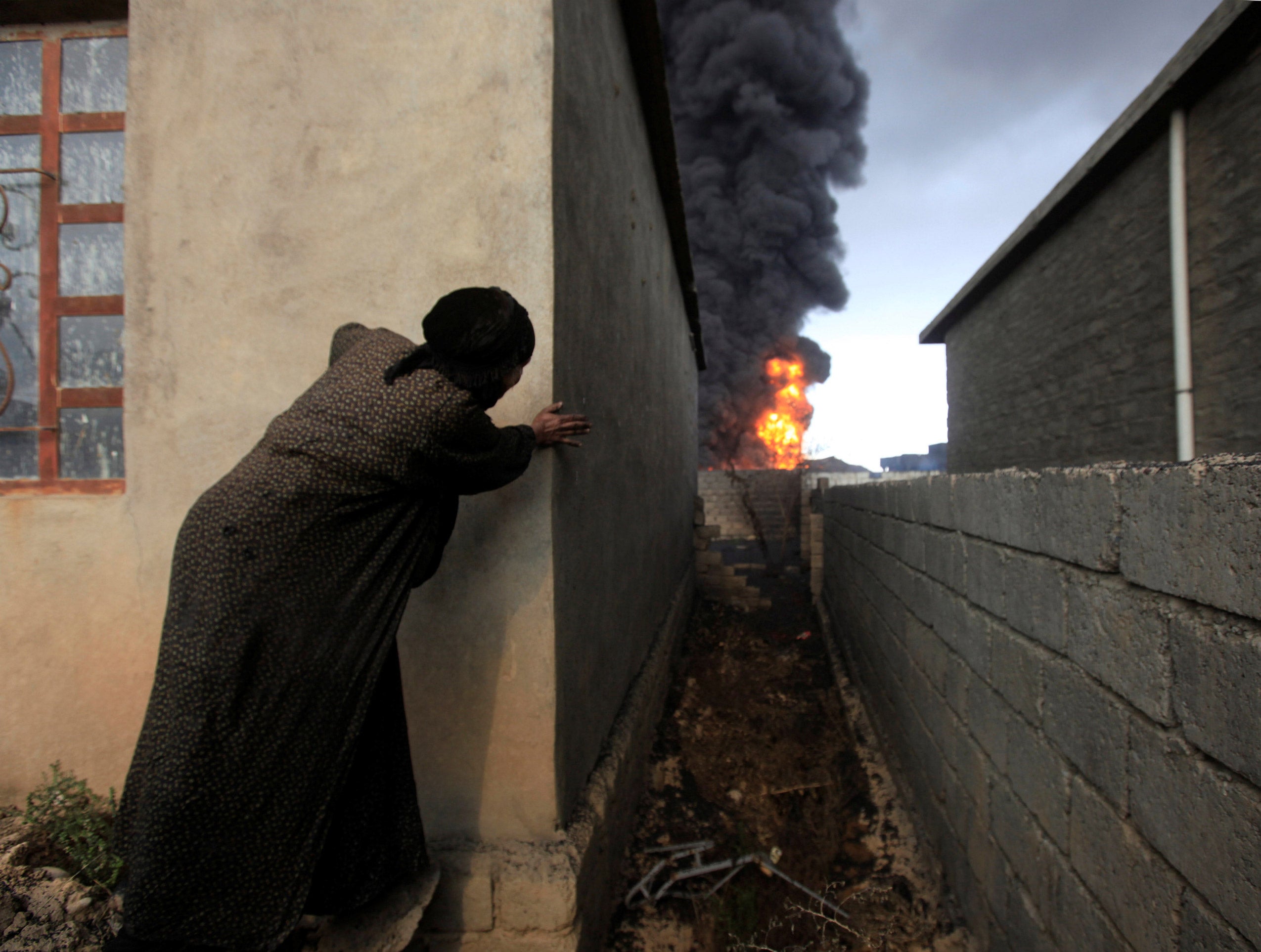Between 1946 and 1958, the United States conducted 67 nuclear tests in the Marshall Islands, irreparably damaging the environment and disrupting the lives of the people who called the area home. When Bonnie Docherty ’01, associate director of armed conflict and civilian protection in Harvard Law School’s International Human Rights Clinic, visited the islands in March 2018, she spoke with survivors who suffered from immediate and long-term health effects and who remain displaced decades after the tests.
“Many survivors in the Marshall Islands described having no warning that the tests were going to occur. Then there was blinding light. The sky turned red and various other colors, and then white, radioactive ash fell everywhere,” Docherty said. “Eventually, the U.S. military came and evacuated the communities. For years, as some people would try to return to their home, they did not know if they were still at risk or if the land was safe. There was a remarkable lack of information distributed to those who were most affected.”
These principles are designed to reduce human suffering. … It’s important to remember the people who’ve experienced the effects of environmental damage during war.
Bonnie Docherty ’01
The experiences of survivors in the Marshall Islands, as well as other places where armed conflict and military activity have harmed the environment, provided an impetus for “Confronting Conflict Pollution: Principles for Assisting Victims of Toxic Remnants of War”, a major report released today. Co-published by the International Human Rights Clinic and the Conflict and Environment Observatory (CEOBS), the report establishes a new framework for addressing the human harm resulting from the environmental consequences of conflict.
The report lays out 14 principles that cover a range of harm and assistance, establish a mechanism for shared responsibility, identify key implementation measures, and apply overarching human rights norms. The report also includes a detailed commentary, explaining the principles and providing precedent for them. The overarching goal of the principles is to ensure that victims’ needs are met and that they can realize their human rights.
“There have been huge advances in developing legal frameworks for protecting the environment in relation to armed conflicts in the last decade,” said Doug Weir, research and policy director at CEOBS. “The principles help fill a clear gap in clarifying how states and the international community should respond to the consequences of environmental degradation on communities.”
Weir and a panel of other experts joined Docherty for an online launch event on September 30.
https://www.youtube.com/watch?v=RJhG911vrvs&feature=youtu.be
Docherty began the process of drafting principles regarding toxic remnants of war with Weir and then-Clinical Fellow Rebecca Agule ’10 in fall 2016. After taking a short break to assist the Nobel Peace Prize-winning International Campaign to Abolish Nuclear Weapons (ICAN) during the negotiations of the historic Treaty on the Prohibition of Nuclear Weapons (TPNW), she returned to the project in fall 2018 with an exceptional team of clinical students: Matthew Griechen ’19, Daniel Levine-Spound ’19, and Susannah Marshall ’19. Docherty’s experiences with the TPNW, the first treaty to require assistance for victims of toxic remnants of war, informed the clinic’s principles.
Victim assistance is a key part of humanitarian disarmament. As the report notes, the Mine Ban Treaty, the Convention on Cluster Munitions, and the TPNW not only aim to prevent future harm from such weapons, but also “require states parties to provide assistance to people, civilians and combatants alike, who have been harmed by banned weapons or the remnants they leave behind.” The report adapts the concept of victim assistance, originally designed to deal with explosive weapons, to conflict-related pollution, such as that from nuclear weapon use and testing, oil well fires in Iraq, or the bombing of industrial plants in Ukraine.
The report adapts the concept of victim assistance, originally designed to deal with explosive weapons, to conflict-related pollution, such as that from nuclear weapon use and testing, oil well fires in Iraq, or the bombing of industrial plants in Ukraine.
The distinctive characteristics of the toxic or radiological substances that result from military activities pose new challenges for victim assistance. Pinpointing the source of harm, for example, can be difficult given the effects are less constrained by time and geography than those of explosive weapons.
“When someone steps on a landmine and loses their leg, it might be clear what happened, what kind of support the person requires, and how the harm in question is linked to armed conflict,” said Levine-Spound, a 2019-2020 Satter Human Rights Fellow. “But if the environment becomes polluted through armed conflict, it can be more challenging to trace the full range of harms suffered by the civilian population, and thus more difficult to determine the range of services and forms of support that ought to be provided. Certain harms related to toxic remnants of war, such as an increased likelihood of contracting certain diseases in affected populations, may only become clear years after the cessation of hostilities.”

The principles in “Confronting Conflict Pollution” call for a variety of assistance to address the breadth of harm. Harm can include physical, psychological, or socioeconomic injury and infringement of a victim’s human rights. Many survivors of the bombing on Hiroshima, for instance, were not only severely scarred, but also suffered stigmatization, making it harder to get a job or find partners. Addressing such harm requires health care and measures to promote socioeconomic inclusion as well as information that helps affected communities protect themselves from the invisible threat of toxic remnants of war.
Critical to the effectiveness of victim assistance programs is a framework of shared responsibility among states. Rather than focusing on blame or legal accountability, the report looks at how states, along with international organizations and civil society, can work together to help those who have been affected and realize their human rights.
“There’s nothing in the principles that prevents victims from pursuing legal redress from those that caused the harm, but we’re less focused on fault and more focused on ensuring help for those in need,” said Docherty.
While affected states should take the lead on assisting victims in their territory, all other states should support their efforts. In particular, donor states should help build national capacity that promotes the sustainability of victim assistance programs and empowers local communities. Several survivors Docherty spoke to in the Marshall Islands, for instance, were flown to the U.S. for surgeries to deal with thyroid cancer caused by nuclear testing. In a world better informed by the principles, states would invest in hospitals and medical schools domestically for those who might require such treatment.
The 14 principles also incorporate international human rights fundamentals. They state that assistance should be grounded in inclusivity and non-discrimination to ensure respect for all victims. The provision of victim assistance should be accessible and transparent to ensure it is effective and allows for monitoring.
To develop the principles, Docherty’s student team surveyed a range of law, policy, and practice from the fields of humanitarian disarmament, international human rights law, and international environmental law.
The clinic and CEOBS hope the principles will inform future efforts to assist victims of toxic remnants of war.
“We would like to see states taking ownership of the principles and promoting them across the many parallel processes dealing with conflict and the environment,” said Weir. “An important test of their normative value will be the extent to which they help frame victim assistance in instruments like the Treaty on the Prohibition of Nuclear Weapons.”
Docherty stressed that the principles should stay rooted in the needs of those who have been most affected. “These principles are designed to reduce human suffering,” says Docherty. “The commentary can be dense—it includes legal precedent and other models, but ultimately, it’s important to remember the people who’ve experienced the effects of environmental damage during war. We hope that the principles can be useful to states and civil society organizations so that those who are affected get the help they need.”
Docherty and Weir launched the report on September 30 in a jointly hosted webinar, which you can read about and watch on the Humanitarian Disarmament website. The primary authors of this report were Bonnie Docherty, associate director of armed conflict and civilian protection at the Harvard Law School International Human Rights Clinic (IHRC), and Matthew Griechen ’19, then a Harvard Law student in IHRC.
Daniel Levine-Spound ’19 and Susannah Marshall ’19, then IHRC students, also contributed significantly to the report’s research and writing. Jillian Rafferty ’20, then an IHRC student, produced the tables and provided other assistance. Rebecca Agule ’10, then an IHRC fellow, and her clinical team, Marissa Brodney ’18, Roni Druks’ 17, Robert Gustafson ’18, and David Kimball-Stanley ’18, did extensive initial research for the report and helped to craft the principles.
